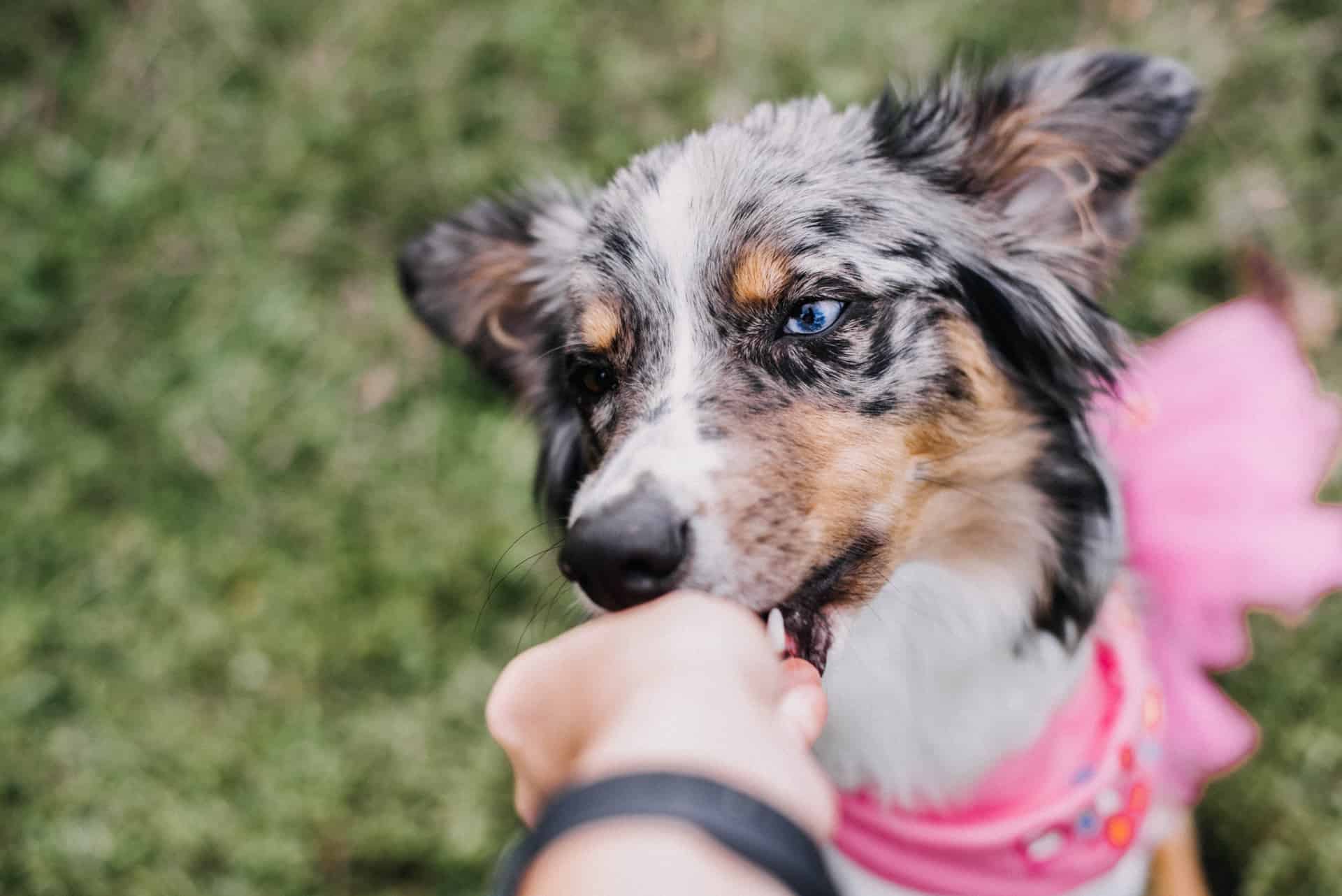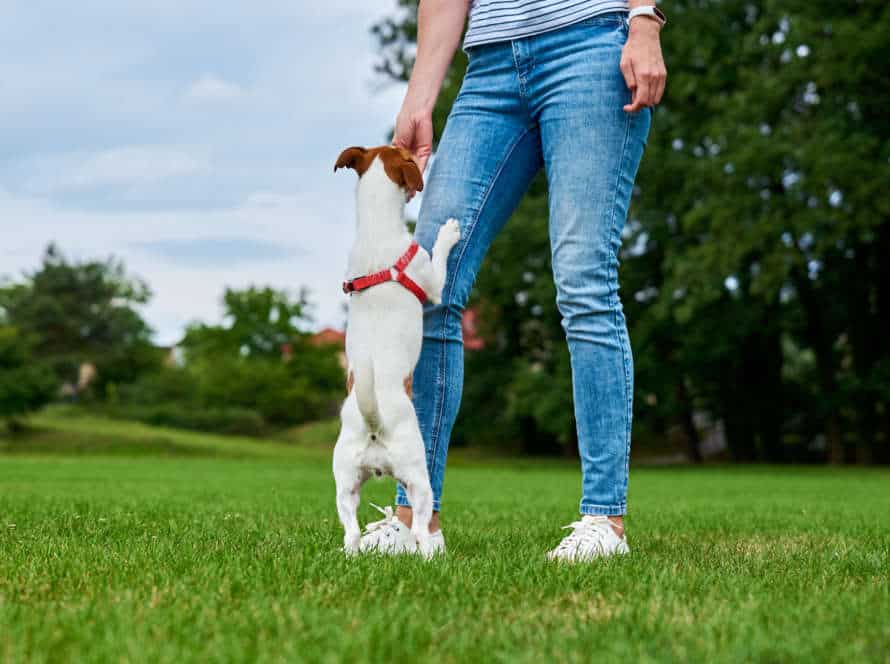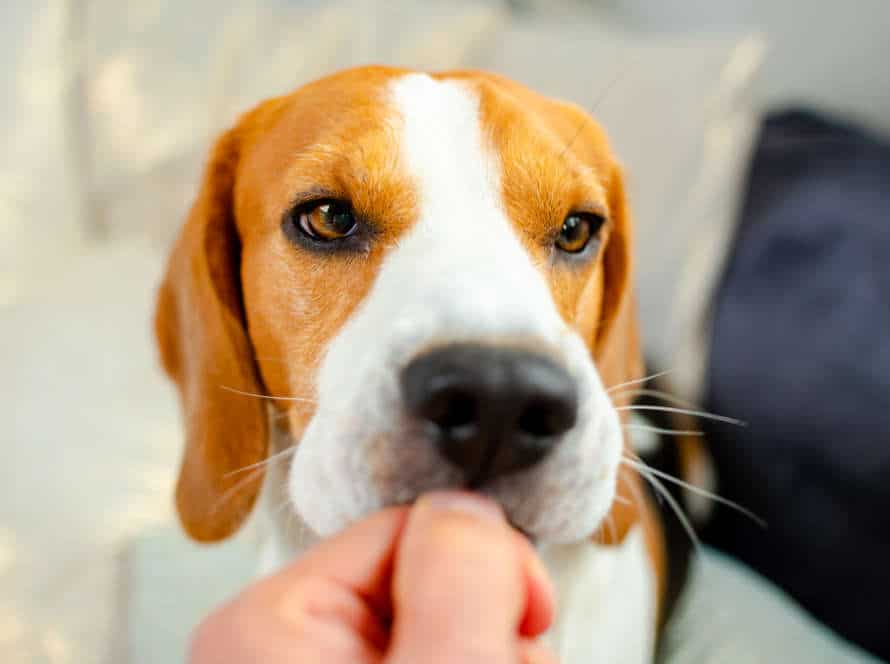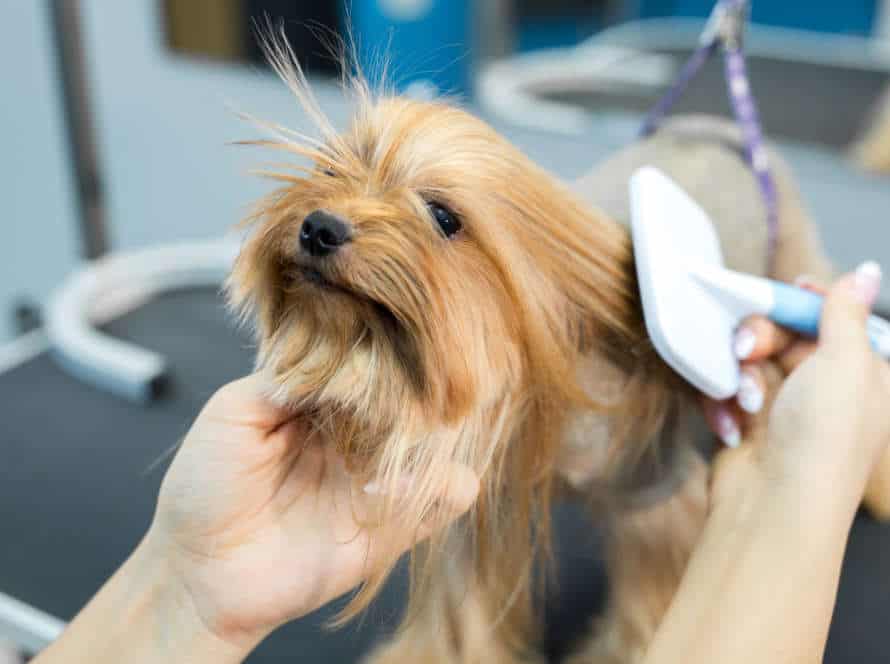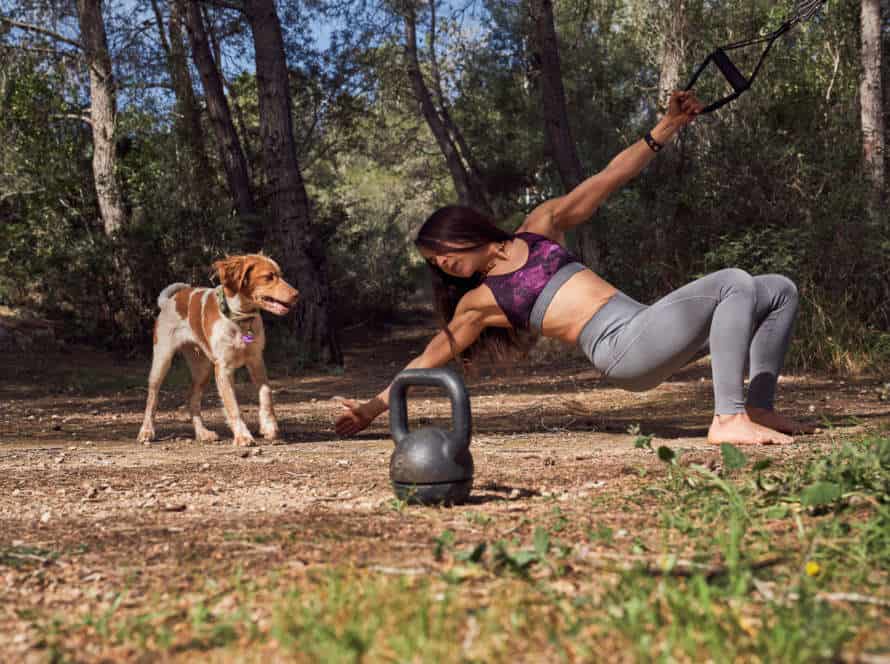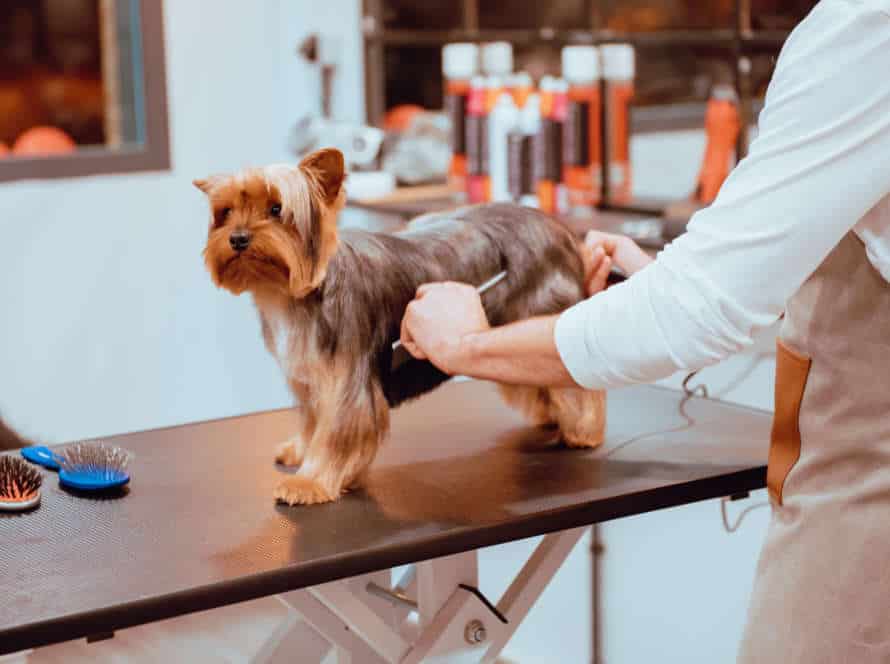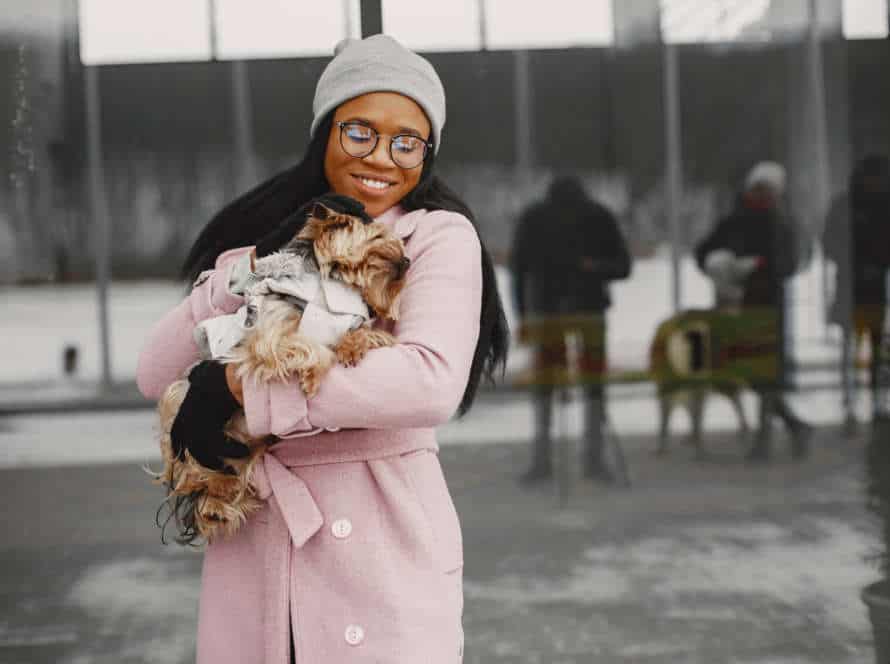Unlock Your Dog’s Potential with Positive Reinforcement
Positive reinforcement is an awesome way to unlock your pup’s potential and make them a healthy, happy, and obedient buddy. You can use these techniques without causing distress, strengthening the bond between you and your pup.
To get started, here’s what you need to do:
- Identify what motivates your pup – treats, praise, playtime – whatever!
- Utilize positive reinforcement methods, like clicker training, shaping, and luring, with consistency and patience.
- Reward your pup right away when they display desirable behavior – so they understand it gets a good result.
- Take baby steps, so your pup doesn’t feel overwhelmed.
- Keep training short and fun – so they enjoy the process.
- Respect your pup’s unique character and learning style – and use positive reinforcement methods that fit them.
Remember, training your pup is a lifetime journey, not a destination. With positive reinforcement, you can make the journey enjoyable and rewarding for both you and your furry pal!
The Basics of Positive Reinforcement
Positive reinforcement is a great way to train your pup! It works by rewarding desired behaviors. This technique is popular for dog training as it’s effective, humane, and helps to create a strong bond between you and your pup. Plus, it gives your pup motivation and helps to encourage good behavior.
Let’s explore the basics of positive reinforcement and how to get started.
What is Positive Reinforcement?
Positive reinforcement is a special way to train your pup! Instead of punishing bad behavior, you reward good behavior. You can use yummy treats, praise, or toys to give your pup positive feedback. Here’s how it works:
- Notice and reward the desired behavior
- Show patience with unwanted behavior
- Give rewards quickly
- Keep commands clear and simple
Using positive reinforcement to train your pup is effective and builds a strong bond between you two. Your pup will be more likely to repeat the good behavior when rewarded. This method works for all breeds and ages, creating a positive learning environment.
Why Use Positive Reinforcement in Dog Training?
Positive reinforcement is a must for successful dog training. No fear or punishment needed! Here’s why:
- It builds trust between you and your pup.
- Good behavior is reinforced – like sitting, staying, and coming when called.
- It boosts confidence and reduces fear.
- Cruel techniques are not allowed – like shock collars, choke chains, or prong collars.
- Positive reinforcement is the key to a successful training program that strengthens the bond between you and your pup.
How to Use Positive Reinforcement Effectively
Positive reinforcement is a training technique that gives rewards for good behavior, instead of punishing bad. Here are key points to unlock your pet’s potential:
- Figure out which behavior you want to encourage. Sitting? Staying? Coming when called?
- Pick the right reward. Treats, playtime, or praise?
- Timing is essential. Reward quickly after the desired action.
- Keep it consistent. Patience and consistency will get you results.
By understanding these basics, you can train your dog in a fun and effective way.
Techniques for Positive Reinforcement
Positive reinforcement is key to helping your dog reach its peak. This can assist in learning important skills like obeying commands and performing tricks. Rewarding your pup for the right behaviour is one of the most successful ways to educate them. Here, we’ll discuss the different positive reinforcement techniques you can use to unlock your pooch’s potential.
Clicker Training
Clicker training is a great way to help your pup reach their full potential. Use a clicker device to reward good behavior with treats or praise. Here’s how to get going:
- Introduce the clicker and pair it with something positive, like treats or toys.
- Start with basic commands like “sit” or “stay”.
- Click the clicker then give a treat or praise when your dog obeys.
- Keep sessions short and consistent.
- Increase difficulty and eventually abandon treats, using only praise and affection.
Clicker training can improve listening, obedience and behaviour. Tip: Stay patient and consistent with clicker training, as it may take time for your dog to understand.
Food Treats
Food treats can be a great way to reward good behavior in your pup! Use the right techniques to make the most of this method. Here are two ways to use food treats for positive reinforcement:
- Opt for small, bite-sized treats. Small treats help you stay mindful of calories, and also let you reward your dog multiple times. Look for treats that are low in fat, but high in protein.
- Use a clicker! This small device makes a distinct sound when pressed. It’s perfect for precise timing, and lets you communicate clearly with your pup. Click when your pup does the desired behavior, and then offer a treat.
Using food treats with these techniques will result in a healthy, happy, and well-behaved pooch!
Play-Based Positive Reinforcement
Play-based positive reinforcement is an amazing way to help your pup reach its full potential! Reward them with playtime, toys or interactive games when they do something good.
Examples of these rewards are:
- Fetch: Throw a ball or toy after they obey your command.
- Tug of war: Use a rope or plush toy and let your pup win!
- Hide and seek: Hide treats or toys around the house or yard for them to find.
In short, play-based positive reinforcement is a great way to motivate and reward your dog. Plus, it makes training fun and strengthens your bond.
Positive Reinforcement Commands for Dog Training
Positive reinforcement commands can be a great aid in training a pup. Encouraging behaviour you wish to see, rather than punishing behaviour you don’t want, can make your dog want to please you and build a strong connection.
Let’s dive into the commands used for positive reinforcement training!
Sit Command
The “Sit” command is a must for successful dog training. It unlocks potential through positive reinforcement. Here’s why this command is so important:
- You become the pack leader.
- Your pup gets mental and physical activity.
- Obedience and trust are built between you and your pup.
To use positive reinforcement to teach them “Sit,” here’s what to do:
- Get their attention with a treat.
- Hold it above their head, making them lift their nose & head – they’ll sit.
- Say “Sit!” & reward them when they do.
- Repeat, no treat needed eventually. Pro tip: Be consistent & reward good behavior.
Stay Command
“Stay” is a great command to use when training your pup. It helps them with impulse control and safety. Here’s how you can use positive reinforcement to teach them “stay”:
- Command them to sit or down.
- Say “stay” with a clear and firm voice, and use a hand signal like raising your hand in front of their face, palm towards them.
- Take a step back. Pause. Come back and reward them with a treat and praise if they stayed.
- Increase the length of “stay” and the distance you move away gradually.
- Always reward them for staying and never punish them for breaking the command.
With patience and consistency, your pup will learn to stay in place. Positive reinforcement will help them reach their full potential.
Leave It Command
“Leave it” is an important command for dog owners to teach their pup. It helps them learn to not touch, eat, or take something you don’t want them to have. Here’s how to do it:
- Show your dog a treat in your closed hand.
- Say “Leave it” and close your hand.
- Wait until your pooch stops trying to get the treat. If they do, say “Yes!” and give them a treat from your other hand.
- Keep practicing with different items while adding more distractions.
- Eventually your dog will obey the command on cue.
Pro Tip: Build a great bond and successful training by rewarding your pup with love, patience, and appreciation.
Come Command
The come command is essential for positive reinforcement when teaching your dog. It increases responsiveness, strengthens the bond between you and your pup, and increases safety. Here are some tips to help:
- Pick a word, like “come” or “here”, and use your pup’s name.
- Reward them with treats or cuddles when they come.
- Practice in various locations and with distractions.
Positive reinforcement like treats, toys, and verbal praise is useful for training. On the other hand, scolding or punishing can cause fear and aggression.
Remember: keep it upbeat and positive! With patience and consistency, your pup will soon master the come command!
Positive Reinforcement Tools for Dog Training
Positive reinforcement is a terrific way to build a strong bond with your pup! There are many tools you can use to help your dog learn new tricks. Let’s look at some of the common ones and how to best use them for training.
Harnesses
Harnesses can unlock your pup’s potential during training! They’re an alternative to collars and can be very useful. Here are some benefits that make a big difference in training:
- Lower strangling risks – harnesses spread the leash’s force across the chest & shoulders, not the neck.
- More control – harnesses give you better control over your pup.
- Positive reinforcement – they limit tugging, yanking, and choking, which promotes positive behavior.
Choose the right harness for your pup’s size, breed, and personality. Pro Tip – Start early and use positive reinforcement; your pup will love their harness!
Leashes
Leashes are must-haves for positive reinforcement dog training. They provide both the dog and handler with control and safety. This allows for great interactions and communication during training.
Using a leash in combination with positive reinforcement helps your pup understand good behavior should be rewarded. This leads to obedience.
Types of leashes used in positive reinforcement dog training:
- Standard Leash: Most common; made of nylon or leather; different lengths. Ideal for basic obedience.
- Retractable Leash: Can extend/retract; perfect for recall and leash manners.
- Head Halter: Fits around head; gentle control for aggressive or excitable dogs. Also stops pulling.
By using a leash and positive reinforcement, you can unlock your pup’s potential and have a happy, obedient furry pal.
Treat Dispensers
Treat dispensers are a great way to boost your pup’s potential and promote good behavior. They come in various forms such as ball- or stick-shaped, treat pouches, and puzzle feeders.
By utilizing a treat dispenser during training, you can:
- Encourage positive behavior – rewards motivate dogs and the dispenser makes giving these rewards convenient.
- Keep your dog motivated – it keeps them interested in the training session and improves their attitude.
- Reinforce training commands – connect treat dispensers to certain commands or behaviors for reinforcement.
- Ensure consistent training – a treat dispenser helps make the training process more successful for your pup.
Top Tip: Monitor your pooch’s eating habits when using a treat dispenser and adjust their diet accordingly. Choose healthy treats that are suitable for their age and size.
Common Mistakes to Avoid in Positive Reinforcement Dog Training
Positive reinforcement dog training: an effective way to teach your pup! This idea uses rewards to encourage good behavior and habits; and ignores bad ones. Time to start training!
But, there are a few mistakes you should avoid. Here are the common ones:
- Don’t be too demanding.
- Don’t make the training too long.
- Don’t use old-fashioned methods.
- Don’t forget to reward good behavior.
- Don’t underestimate the patience needed.
Avoiding these mistakes will help optimise results and minimise frustration. Let’s get training!
Giving treats for unwanted behaviors
Giving treats for bad behavior is a mistake in positive reinforcement dog training. Positive reinforcement is about rewarding good behavior, not punishing bad behavior. This can cause negative results.
For example, giving your dog a treat after they bark too much or beg at the dinner table, reinforces this behavior and encourages it to happen again.
Rather than this, focus on rewarding behaviors that you want to reinforce, like sitting quietly, staying calm and staying away from people and other animals.
Through time, patience and consistent positive reinforcement, your dog will learn which behaviors to avoid and respond well to your training attempts.
Using physical punishment
Using physical punishment in dog training is a common misstep for pet owners–it can have bad impacts on the pup’s behavior and training. Rather, positive reinforcement is a better way to train a dog. It rewards good behavior with treats, compliments, and playtime. Here are some explanations why physical punishment should be avoided:
- It can spark fear and hostility in the dog, plus hurt the relationship between pet and owner.
- Dogs may not understand what they are being punished for, resulting in confusion and fear.
- Positive reinforcement has been shown to work better in dog training, creating better behavior and a happier pup.
By using positive reinforcement techniques such as clicker training and target training, pet owners can help their pup reach their potential and build a strong and healthy bond.
Inconsistent Training
Inconsistent training is a big no-no when it comes to positive reinforcement dog training. Consistency is key! Why? Dogs learn through repetition and sameness. If you’re not consistent, your pup may become mixed up and make mistakes. It can also lead to a loss of trust and bad behavior. To avoid this, set up a routine and stay true to it. Use the same words each time and make sure to reward your dog for good behavior – every time! If you’re not consistent, your pup won’t understand what you want and could become worried and stressed. Remember, positive reinforcement is all about building a strong bond and trust. So, stick to the plan and consistency will do the trick.
Positive Reinforcement Success Stories
Positive reinforcement is amazing for helping pooches reach their peak and build a powerful bond. Reward and applaud them for great behavior and ignore/redirect when they do things we don’t want. This way of training is known to be dependable and successful.
Let’s check out some successes that prove positive reinforcement can be a mighty tool!
Teaching an Old Dog New Tricks
It’s a common belief that old dogs can’t learn new tricks. But, pups of all ages can benefit from positive reinforcement training. This rewards good behavior and helps unlock their potential. Here’re some success stories:
- After a few positive reinforcement training sessions, a 10-year-old rescue dog could walk calmly on a leash without pulling.
- Treats and praise helped an anxious senior dog associate strangers with positive experiences.
- An elderly dog with arthritis learnt new behaviors, such as using a ramp to go up and down stairs, with positive reinforcement and patience.
With patience and consistency, plus positive reinforcement methods such as clicker training and treat rewards, you can help your old dog master new tricks and behaviors.
Socializing a Shy Dog
Socializing a shy pup can be hard work, but positive reinforcement can unlock their potential and build confidence. Here are some success stories from owners who used it:
- Gradual exposure: Expose the shy pup to new stuff, reward them with treats and praise, and help them feel more comfortable in social situations.
- Clicker training: Use clickers to reward confidence-building behaviors, like approaching people and other dogs.
- Desensitization: Gradually increase exposure to loud noises and sudden movements. Reward calm behavior with treats.
By using tailored positive reinforcement techniques, you too can socialize your shy dog. Pro tip: Ask a professional trainer for personalized advice.
Fixing Behavioral Issues with Positive Reinforcement
Positive reinforcement is a powerful way to address behavior problems in dogs. Here are three success stories that show this method works!
- Bella was a rescue pup with too much energy. Her owners used treats, clicks, and praise to redirect her energy to helpful behaviors.
- Max was scared of other dogs. His owners used positive reinforcement to help him get used to them. Eventually his fearful reactions stopped.
- Oscar was disobedient. Treats and praise were used to reward good behavior. This method helped him become a loving companion.
Positive reinforcement can help your pooch reach their full potential. Be consistent and patient, and always reward good behavior.
Taking Positive Reinforcement to the Next Level
Positive reinforcement is a humane way to train your dog. Rewards with desired behaviour causes faster learning and builds strong bonds. There are simple and advanced ways to use positive reinforcement when training your pup. Let’s explore these ideas and make the most of our doggy friends!
Advanced Techniques for Positive Reinforcement
Positive reinforcement is a useful training tactic; it increases the bond with your furry friend and encourages good behavior. Advanced techniques can take this to the next level and bring out your dog’s best.
The following are some advanced techniques that can maximize the benefits of positive reinforcement and make your dog’s behavior and attitude soar:
- Shaping: Break down a complex action into parts and reward each step. Start with actions your dog knows and increase difficulty slowly.
- Chaining: Connect multiple behaviors into one sequence. Dogs love routine and this adds structure to their day.
- Backchaining: Train the end behavior first and work backward. This builds confidence while teaching complex tasks.
- Targeting: Teach the dog to touch an object or body part, like a hand or stick. This avoids using force or intimidation.
These techniques can maximize the benefits of positive reinforcement and make your dog’s behavior and attitude soar!
Competitive Dog Training with Positive Reinforcement
Positive reinforcement is a great tool for dog training, and can help your pup reach the peak of competitive success. Here’s how to use positive reinforcement to get the most out of your dog’s potential in competitions:
- Begin with basics: Start with commands like “sit,” “stay,” and “come” and reward your pup each time they do it right.
- Clicker training: Clicker training uses a clicking sound and a treat to show your dog what behavior you want.
- Up the difficulty: When your dog has mastered the basics, increase the difficulty and add distractions like crowds or other dogs.
- Use obedience drills: Teach your pup the “Heel” command, so they can walk by your side, stop when you stop, and move when you move.
- Make it fun: Make sure you keep it fun for both you and your pup. Dogs learn best with positive reinforcement and playtime.
Pro Tip: With consistency, patience, and positive reinforcement techniques, you can unlock your pup’s potential and excel in dog training competitions!
Training Service Dogs with Positive Reinforcement
Training service dogs with positive reinforcement is highly effective. It rewards good behavior instead of punishing bad behavior. To motivate a dog, provide treats, praise and affection. Here are some tips to take it to the next level:
- Be consistent so your dog can thrive on routine.
- Be patient. Training takes time.
- Be specific. Tell your dog what behavior you want and reward them for that.
- Use high-value rewards like cheese and meat.
By using positive reinforcement, you can unlock your dog’s potential and create a strong bond.
Frequently Asked Questions
Q: What is positive reinforcement?
A: Positive reinforcement is a technique used to encourage desirable behavior in dogs by rewarding them with treats, praise, or other incentives.
Q: Can positive reinforcement help to correct bad behavior in dogs?
A: Yes, positive reinforcement can be an effective tool for correcting bad behavior in dogs, as it encourages dogs to perform desirable behaviors and discourages undesirable ones.
Q: Are there any negative consequences to using positive reinforcement?
A: No, there are no negative consequences to using positive reinforcement – it is a humane and effective technique that can help to build a strong bond between dogs and their owners.
Q: How can I use positive reinforcement to unlock my dog’s potential?
A: By consistently rewarding desirable behavior with treats, praise, and other incentives, you can help to build your dog’s confidence, improve their obedience, and unlock their full potential.
Q: Can positive reinforcement be used in conjunction with other training techniques?
A: Yes, positive reinforcement can be used in conjunction with other training techniques – for example, you may choose to use positive reinforcement alongside clicker training or leash training to achieve the best results.
Q: Are there any resources available to learn more about positive reinforcement training for dogs?
A: Yes, there are many resources available online and in print that can help you learn more about positive reinforcement training for dogs – including books, instructional videos, and training classes.

